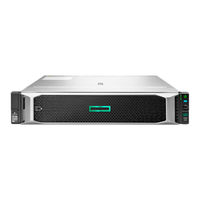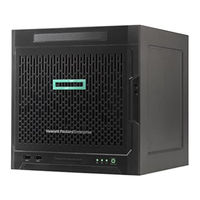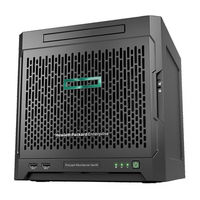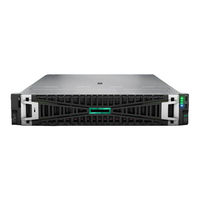HPE ProLiant MicroServer Gen10 Manuals
Manuals and User Guides for HPE ProLiant MicroServer Gen10. We have 8 HPE ProLiant MicroServer Gen10 manuals available for free PDF download: Troubleshooting Manual, User Manual, Maintenance And Service Manual
HPE ProLiant MicroServer Gen10 Troubleshooting Manual (176 pages)
Table of Contents
-
-
-
-
-
Power Issues71
-
-
-
-
Memory Issues100
-
NVDIMM Issues106
-
Processor Issues115
-
-
-
Video Issues119
-
-
Cable Issues127
-
Software Issues
129-
-
Linux Resources131
-
ROM Issues132
-
-
Boot Issues135
-
-
-
-
Server Mode138
-
HPE Ilo 5139
-
Ilo Federation140
-
Ilo Service Port140
-
Ilo Restful API141
-
-
USB Support146
-
-
Drivers149
-
Advertisement
HPE ProLiant MicroServer Gen10 User Manual (145 pages)
UEFI System Utilities for Servers and Synergy
Table of Contents
-
-
-
-
-
-
Boot Options76
-
-
-
-
Server Security106
-
Secure Boot107
-
-
HPE ProLiant MicroServer Gen10 Maintenance And Service Manual (101 pages)
Table of Contents
-
-
-
USB Support78
Advertisement
HPE ProLiant MicroServer Gen10 User Manual (76 pages)
Table of Contents
-
Setup
14 -
Operations
21 -
-
Introduction31
-
-
-
Cabling
55
HPE ProLiant MicroServer Gen10 Troubleshooting Manual (71 pages)
Table of Contents
-
-
-
-
Power Issues29
-
-
ROM Issues53
HPE ProLiant MicroServer Gen10 User Manual (63 pages)
Intelligent Provisioning for Servers and Synergy
Table of Contents
Advertisement







